Data-Driven Models Applied to Predictive and Prescriptive Maintenance of Wind Turbine: A Systematic Review of Approaches Based on Failure Detection, Diagnosis, and Prognosis
Abstract
:1. Introduction
- Failure rates in systems that make up the gearbox are higher than those of frequency inverters when analyzed in indirect-drive turbines;
- Systems composed of frequency inverters and electronic components present higher failure rates in direct-drive turbines when compared to the failure rates of gearbox systems used in indirect-drive turbines;
- The direct-drive wind turbine generator system has failure rates at least twice those of the indirect-drive system.
2. Theoretical Foundations
2.1. Condition-Based Maintenance (CBM)
2.1.1. Data-Driven Techniques
2.1.2. Physics-Based Techniques
2.1.3. Stochastic Techniques
2.1.4. Hybrid Techniques
2.2. Prognostic and Health Management—PHM
2.3. Machine Learning
2.4. Artificial Neural Networks and Deep Learning
2.4.1. Perceptrons and Multilayer Perceptron—MLP
2.4.2. Recurrent Neural Networks—RNNs
2.4.3. Convolutional Neural Network—CNN
2.4.4. Autoencoders
2.4.5. Variational Autoencoder—VAE
2.5. Main Components of a Wind Turbine
2.5.1. Generators
2.5.2. Converters—Power Electronics and Electrical Controls
2.5.3. Turbine Rotors, Blades, and Hydraulic Controls
2.5.4. Wind Turbines with and without Gearbox
3. State of the Art
3.1. Approach Based on Detection of Anomalies and Failures
3.2. Approach Based on Fault Diagnosis
3.3. Approach Based on Failure Prognosis and RUL Estimation
3.4. Approach Based on Prescriptive Maintenance Applied to Wind Turbines
4. Results Found and Gaps in Development
5. Conclusions
Author Contributions
Funding
Data Availability Statement
Acknowledgments
Conflicts of Interest
References
- Zhou, M.; Huang, Y.; Li, G. Changes in the concentration of air pollutants before and after the COVID-19 blockade period and their correlation with vegetation coverage. Environ. Sci. Pollut. Res. Int. 2021, 28, 23405–23419. [Google Scholar] [CrossRef] [PubMed]
- Gao, C.; Chen, H.; Xie, Y.; Qi, L. Conceptual Design and Motion Response Research of Wind Power Operation and Maintenance Life Platform. J. Res. Sci. Eng. 2020, 2, 132484. [Google Scholar]
- Wang, Q.; Gao, Z.; Yuan, X.; Wang, J.; Wang, M. Comprehensive energy evaluation and optimization of corn straw power generation system: A case study. Chin. J. Popul. Resour. Environ. 2019, 17, 135–144. [Google Scholar] [CrossRef]
- WWEA. Available online: https://gwec.net/globalwindreport2023 (accessed on 9 October 2023).
- Câmara de Comercialização de Energia Elétrica—CCEE. Available online: https://www.ccee.org.br/web/guest/dados-eanalises/dados-geracao (accessed on 8 October 2023).
- Martorell, S.; Carlos, S.; Sanches, A.; Marton, I. Onshore wind farms maintenance optimization using a stochastic model. Math. Comput. Model. 2013, 57, 1884–1890. [Google Scholar] [CrossRef]
- Peng, H.; Li, S.; Shangguan, L.; Fan, Y.; Zhang, H. Analysis of Wind Turbine Equipment Failure and Intelligent Operation and Maintenance Research. Sustainability 2023, 15, 8333. [Google Scholar] [CrossRef]
- Leite, G.N.P.; Araújo, A.M.; Rosas, P.A.C. Prognostic techniques applied to maintenance of wind turbines: A concise and specific review. Renew. Sustain. Energy Rev. 2018, 81, 1917–1925. [Google Scholar] [CrossRef]
- Zhang, H.T. Offshore Wind Power Technology and Research. Resour. Conserv. Environ. Prot. 2017, 6, 15–16. [Google Scholar]
- Liu, R.; Solangi, Y.A.T. An Analysis of Renewable Energy Sources for Developing a Sustainable and Low-Carbon Hydrogen Economy in China. Processes 2023, 11, 1225. [Google Scholar] [CrossRef]
- Yang, W.; Tavner, P.J.; Wilkinson, M.R. Condition monitoring and fault diagnosis of a wind turbine synchronous generator drive train. IET Renew. Power Gener. 2009, 3, 1–11. [Google Scholar] [CrossRef]
- Walford, C. Wind turbine reliability: Understanding and minimizing wind turbine operation and maintenance costs. Sandia Natl. Lab. 2006, 10, SAND2006-1100. [Google Scholar] [CrossRef]
- He, Q.; Zhao, J.; Jiang, G.; Xie, P. An unsupervised multiview sparse filtering approach for current-based wind turbine gearbox fault diagnosis. IEEE Trans. Instrum. Meas 2020, 69, 5569–5578. [Google Scholar] [CrossRef]
- Wang, L.; Zhang, Z.; Xu, J.; Liu, R. Wind turbine blade breakage monitoring with deep autoencoders. IEEE Trans. Smart Grid 2018, 4, 2824–2833. [Google Scholar] [CrossRef]
- Do, M.H.; Soffker, D. State-of-the-art in integrated prognostics and health management control for utility-scale wind turbines. Renew. Sustain. Energy Rev. 2021, 145, 111102. [Google Scholar] [CrossRef]
- Tavner, P.J.; Van Bussel, G.J.W.; Spinato, F. Machine and converter reliabilities in wind turbine. In Proceedings of the 3rd IET International Conference on Power Electronics, Machines and Drives, Dublin, Ireland, 4–6 April 2006; pp. 127–130. [Google Scholar]
- Carroll, J.; McDonald, A.; Dinwoodie, I. Availability, operation and maintenance costs of offshore wind turbines with different drive train configurations. Wind. Energy 2017, 20, 361–378. [Google Scholar] [CrossRef]
- Pfaffel, S.; Faulstich, S.; Rohrig, K. Performance and reliability of wind turbines: A review. Energies 2017, 10, 1904. [Google Scholar] [CrossRef]
- Lei, Y.; Yang, B.; Jiang, X.; Jia, F.; Li, N.; Nandi, A.K. Applications of machine learning to machine fault diagnosis: A review and roadmap. Mech. Syst. Signal Process 2020, 138, 106587. [Google Scholar] [CrossRef]
- Jha, S.K.; Bilalovic, J.; Jha, A.; Patel, N.; Zhang, H. Renewable energy: Present research and future scope of artificial intelligence. Renew. Sustain. Energy 2017, 77, 297–317. [Google Scholar] [CrossRef]
- Rababaah, A.R. Comparative Study of Deep Learning Models Versus Machine Learning Models for Wind Turbine Intelligent Health Diagnosis Systems. Arab. J. Sci. Eng. 2023, 48, 10875–10899. [Google Scholar] [CrossRef]
- Rezaeianjouybari, B.; Shang, Y. Deep learning for prognostics and health management: State of the art, challenges, and opportunities. Measurement 2020, 163, 107929. [Google Scholar] [CrossRef]
- Nti, I.K.; Adekoia, A.F.; Weyori, B.A.; Nikaro-Boateng, O. Applications of artificial intelligence in engineering and manufacturing: A systematic review. J. Intell. Manuf. 2022, 6, 1581–1601. [Google Scholar] [CrossRef]
- Sharma, A.; Zhang, Z.; Rai, R. The interpretive model of manufacturing: A theoretical framework and research agenda for machine learning in manufacturing. Int. J. Prod. Res. 2021, 16, 4960–4994. [Google Scholar] [CrossRef]
- EN 13306; Maintenance Terminology. Technical Report; Dansk Standard: Charlottenlund, Denmark, 2017.
- Bakir, I.; Yildrim, M.; Ursavas, E. An integrated optimization framework for multi-component predictive analytics in wind farm operations & maintenance. Renew. Sustain. Energy Rev. 2021, 138, 110639. [Google Scholar] [CrossRef]
- Hamilton, J.D. Time Series Analysis, 9th ed.; Princeton University Press: Princeton, NJ, USA, 2020. [Google Scholar]
- Peng, Y.; Dong, M.; Zuo, M.J. Current status of machine prognostics in condition-based maintenance: A review. Int. J. Adv. Manuf. Technol. 2010, 50, 297–313. [Google Scholar] [CrossRef]
- Sikorska, J.Z.; Hodkiewics, M.; Ma, L. Prognostic modelling options for remaining useful life estimation by industry. Mech. Syst. Signal Process. 2011, 25, 1803–1836. [Google Scholar] [CrossRef]
- Rafsamjani, H.M.; Sorensen, J.D. Stochastic Models of Defects in Wind Turbine Drivetrain Components. In Multiscale Modeling and Uncertainty Quantification of Materials and Structures; Springer International Publishing: Berlin/Heidelberg, Germany, 2014. [Google Scholar] [CrossRef]
- Pecht, M.G.; Kang, M. Prognostics and Health Management of Electronics: Fundamentals, Machine Learning, and the Internet of Things, 1st ed.; Wiley-IEEE Press: Piscataway, NJ, USA, 2018. [Google Scholar]
- Saidi, L.; Ben Ali, J.; Benbouzid, M.; Bechhofer, E. An integrated wind turbine failures prognostic approach implementing Kalman smoother with confidence bounds. Appl. Acoust. 2018, 110, 119–128. [Google Scholar] [CrossRef]
- Marti-Puig, P.; Blanco, M.A.; Cardenas, J.J.; Cusidó, J.; Solé-Casals, J.T. Effects of the pre-processing algorithms in fault diagnosis of wind turbines. Environ. Model. Softw. 2018, 110, 119–128. [Google Scholar] [CrossRef]
- Geron, A. Hands-On Machine Learing with Scikit-Learn & Tensor Flow, 2nd ed.; Alta Books: San Francisco, CA, USA, 2021. [Google Scholar]
- Alla, S.; Adari, S.K. Beginning Anomaly Detection Using Python-Based Deep Learning—With Keras and PyTorch, 1st ed.; Apress: Berkeley, CA, USA, 2019. [Google Scholar]
- Luger, G.F. Artificial Intelligence, 6th ed.; Pearson: Sacramento, CA, USA, 2008. [Google Scholar]
- Haykin, S.K. Neural Networks—Principles and Pratice, 2nd ed.; McMaster University: Hamilton, ON, USA, 2008. [Google Scholar]
- Araújo, F.H.D. Redes Neurais Convolucionais com Tensorflow: Teoria e Prática; Sociedade Brasileira de Computação, III Escola Regional de Informática do Piauí: Porto Alegre, Brazil, 2017; Volume 1, pp. 382–406. [Google Scholar]
- Mantovani, W.A. Utilização de Redes Neurais Recorrentes na Caracterização de Cargas Não Lineares em Sistemas Elétricos. Master’s Thesis, Universidade Estadual Paulista Júlio de Mesquita Filho, Ilha Solteira, Brazil, 2011. [Google Scholar]
- Nelson, D.M.Q.A. Uso De Redes Neurais Recorrentes Para Previsão De Séries Temporais Financeiras. Master’s Thesis, Universidade Federal de Minas Gerais, Belo Horizonte, Brazil, 2017. [Google Scholar]
- Corte, V.D.; Santos, V.K.; Casanova, D. Chatbot baseado em rede neural Long Short-Term Memory (LSTM): Um estudo de caso baseado no livro William Shakespeare. X Comput. Beach 2019, 10, 484–492. [Google Scholar]
- Olah, C. Understanding LSTM Networks. August 2015. Available online: https://colah.github.io/posts/2015-08-Understanding-LSTMs (accessed on 30 April 2023).
- Wang, X.; Mao, D.; Li, X. Bearing fault diagnosis based on vibro-acoustic data fusion and 1D-CNN network. Measurement 2021, 173, 108518. [Google Scholar] [CrossRef]
- Faria, E.L. Redes Neurais Convolucionais e Máquinas de Aprendizado Extremo Aplicadas Ao Mercado Financeiro Brasileiro. Ph.D. Thesis, Universidade Federal do Rio de Janeiro, Rio de Janeiro, Brazil, 2018. [Google Scholar]
- Liang, H.; Zhao, X. Rolling bearing fault diagnosis based on one dimensional dilated convolution network with residual connection. IEEE Access 2021, 9, 31078–31091. [Google Scholar] [CrossRef]
- Zhang, Y.; Feng, Q.; Huang, Q. Machine fault diagnosis based on wavelet packet coefficients and 1D convolutional neural networks. In Proceedings of the IEEE International Conference on Artificial Intelligence and Information Systems (ICAIIS), Dalian, China, 20–22 March 2020; pp. 113–117. [Google Scholar] [CrossRef]
- Astolfi, D.; Lorenzo, S.; Ludovico, T. Fault diagnosis of wind turbine gearboxes through temperature and vibration data. Int. J. Renew. Energy Res. 2017, 7, 965–976. [Google Scholar]
- Souza, R.M.; Nascimento, E.G.S.; Miranda, U.A.; Silva, W.J.D.; Lepikson, H.A. Deep learning for diagnosis and classification of faults in industrial rotating machinery. Comput. Ind. Eng. 2020, 153, 107060. [Google Scholar] [CrossRef]
- Whang, X.; Lin, X.; Zhou, K.; Lu, Y. CNN based mechanical fault diagnosis of high voltage circuit breaker using sound and current signal. In Proceedings of the 2020 IEEE International Conference on High Voltage Engineering and Application (ICHVE), Beijing, China, 6–10 September 2020; pp. 1–4. [Google Scholar] [CrossRef]
- Aggarwal, C.C. Neural Networks and Deep Learning: A Textbook, 1st ed.; Springer: Cham, Switzerland, 2018. [Google Scholar]
- Kingma, D.P.; Wellinng, M. Auto-encoding variational bayes. arXiv 2013, arXiv:1312:6114. [Google Scholar] [CrossRef]
- Pinto, M. Fundamentos de Energia Eólica, 1st ed.; LTC: Rio de Janeiro, Brazil, 2013. [Google Scholar]
- Fadigas, E.A.F.A. Energia Éolica, 1st ed.; Manole: Barueri, Brazil, 2011. [Google Scholar]
- Deng, F.; Chen, Z. Power control of permanent magnet generator based variable speed wind turbines. In Proceedings of the International Conference Electrical Machines and Systems (ICEMS), Tokyo, Japan, 15–18 November 2009. [Google Scholar] [CrossRef]
- Popa, L.M.; Jensen, B.-B.; Ritchie, E.; Boldea, I. Condition monitoring of wind generators. In Proceedings of the 38th IAS Annual Meeting on Conference Record of the Industry Applications Conference, Salt Lake City, UT, USA, 12–16 October 2003; Volume 3, pp. 1839–1846. [Google Scholar] [CrossRef]
- He, H.; Zhou, N.; Sun, C. Efficiency decrease estimation of a permanent magnet synchronous machine with demagnetization faults. Energy Procedia 2017, 105, 2718–2724. [Google Scholar] [CrossRef]
- Wang, J.; Zhao, X.; Guo, X. Optimizing wind turbine’s maintenance policies under performance-based contract. Renew. Energy 2018, 135, 626–634. [Google Scholar] [CrossRef]
- Bouno, T.; Yuji, T.; Hamada, T.; Hideaki, T. Failure forecast diagnosis of small wind turbine using acoustic emission sensor. KIEE Int. Trans. Electr. Mach. Energy Convers. Syst. 2005, 5, 78–83. [Google Scholar]
- Ribrant, J.; Bertling, L.M. Survey of failures in wind power systems with focus on swedish wind power plants during 1997–2005. IEEE Trans. Energy Convers. 2007, 22, 167–173. [Google Scholar] [CrossRef]
- Siegel, D.; Zhao, W.; Lapira, E.; Abuali, M.; Lee, J.T. A comparative study on vibration-based condition monitoring algorithms for wind turbine drive trains. Wind Energy 2013, 17, 695–714. [Google Scholar] [CrossRef]
- Teng, W.; Ding, X.; Tang, S.; Xu, J.; Shi, B.; Liu, Y. Vibration Analysis for Fault Detection of Wind Turbine Drivetrains—A Comprehensive Investigation. Sensors 2021, 21, 1686. [Google Scholar] [CrossRef]
- ISO 13374-2:2007; Condition Monitoring and Diagnostics of Machines-Data Processing, Communication and Presentation, Part 2. Data Processing. ISO: Geneva, Switzerland, 2007.
- Li, X.; Zhang, W.; Ding, Q. Deep learning-based remaining useful life estimation of bearings using multi-scale feature extraction. Reliab. Eng. Syst. Saf. 2019, 182, 208–218. [Google Scholar] [CrossRef]
- Zhao, H. Anomaly detection and fault analysis of wind turbine components based on deep learning network. Renew. Energy 2018, 10, 825–834. [Google Scholar] [CrossRef]
- Reddy, K.K.; Sarkar, S.; Venugopalan, V. Anomaly Detection and Fault Disambiguation in Large Flight Data: A Multi-modal Deep Auto-encoder Approach. In Proceedings of the Annual Conference of the PHM Society, Denver, CO, USA, 3–6 October 2016. [Google Scholar] [CrossRef]
- Jiang, G.; Xie, P.; He, H.; Yan, J. Wind Turbine Fault Detection Using Denoising Autoencoder with Temporal Information. IEEE/ASME Trans. Mechatron. 2018, 23, 89–100. [Google Scholar] [CrossRef]
- Ma, B.; Zhao, Y.; Jiang, Z. Application of Variational Auto-Encoder in Mechanical Fault Early Warning. In Proceedings of the Prognostics and System Health Management Conference, Chongqing, China, 26–28 October 2018; pp. 1263–1268. [Google Scholar] [CrossRef]
- Jiang, G.; He, H.; Xie, P.; Tang, Y. Stacked Multilevel-Denoising Autoencoders: A New Representation Learning Approach for Wind Turbine Gearbox Fault Diagnosis. IEEE Trans. Instrum. Meas. 2017, 66, 2391–2402. [Google Scholar] [CrossRef]
- Luo, Y.; Lu, W.; Kang, S.; Tian, X.; Kang, X.; Sun, F. Enhanced Feature Extraction Network Based on Acoustic Signal Feature Learning for Bearing Fault Diagnosis. Sensors 2023, 23, 8703. [Google Scholar] [CrossRef] [PubMed]
- Yao, X.; Zhu, J.; Jiang, Q.; Yao, Q.; Shen, Y.; Zhu, Q. RUL prediction method for rolling bearing using convolutional denoising autoencoder and bidirectional LSTM. Meas. Sci. Technol. 2023, 35, 035111. [Google Scholar] [CrossRef]
- Figueredo, I.L.; Carvalho, T.F.; Da Silva, W.W.; Guarieiro, L.L.N.; Santos, A.A.B.; Melo Filho, L.S.; Vargas, R.E.V.; Nascimento, E.G.S. Unsupervised Machine Learning for Anomaly Detection in Multivariate Time Series Data of a Rotating Machine from an Oil and Gas Platform. J. Syst. Cybern. Inform. 2021, 19, 217–247. [Google Scholar]
- Verstraete, D. Deep Learning Enabled Fault Diagnosis Using Time-Frequency Image Analysis of Rolling Element Bearings. Shock Vib. 2017, 2017, 5067651. [Google Scholar] [CrossRef]
- Sreeenatha, M.; Mallikarjuna, P.B. A Fault Diagnosis Technique for Wind Turbine Gearbox: An Approach using Optimized BLSTM Neural Network with Undercomplete Autoencoder. Eng. Technol. Appl. Sci. Res. 2023, 13, 10170–10174. [Google Scholar] [CrossRef]
- Zhang, F.; Zhu, Y.; Zhang, C.; Yu, P.; Li, Q. Abnormality Detection Method forWind Turbine Bearings Based on CNN-LSTM. Energies 2023, 16, 3291. [Google Scholar] [CrossRef]
- Fu, H.; Yu, D.; Zhan, C.; Zhu, X.; Xie, Z. Unsupervised rolling bearing fault diagnosis method across working conditions based on multiscale convolutional neural network. Meas. Sci. Technol. 2023, 35, 035018. [Google Scholar] [CrossRef]
- Jiang, G.; He, H.; Yan, J.; Xie, P. Multiscale convolutional neural networks for fault diagnosis of wind turbine gearbox. IEEE Trans. Ind. Electron. 2019, 66, 3196–3207. [Google Scholar] [CrossRef]
- Leahy, K. Diagnosing wind turbine faults using machine learning techniques applied to operational data. In Proceedings of the IEEE International Conference on Prognostics and Health Management (ICPHM), Ottawa, ON, Canada, 20–22 June 2016; pp. 1–8. [Google Scholar] [CrossRef]
- An, X.; Jiang, D.; Li, S. Application of back propagation neural network to fault diagnosis of direct-drive wind turbine. In Proceedings of the World Non-Grid-Connected Wind Power and Energy Conference, Nanjing, China, 5–7 November 2010; pp. 1–5. [Google Scholar] [CrossRef]
- Zhang, Y.; Yu, K.; Lei, Z.; Ge, J.; Xu, Y.; Li, Z.; Ren, Z.; Feng, K. Integrated intelligent fault diagnosis approach of offshore wind turbine bearing based on information stream fusion and semi-supervised learning. Expert Syst. Appl. 2023, 232, 120854. [Google Scholar] [CrossRef]
- Wan, H.; Gu, X.; Yang, S.; Fu, Y. A Sound and Vibration Fusion Method for Fault Diagnosis of Rolling Bearings under Speed-Varying Conditions. Sensors 2008, 23, 3130. [Google Scholar] [CrossRef] [PubMed]
- Wang, Y.; Wang, J.; Tong, P. Small sample fault diagnosis for wind turbine gearbox based on lightweight multiscale convolutional neural network. Meas. Sci. Technol. 2023, 34, 095111. [Google Scholar] [CrossRef]
- Santos, P. An SVM-Based Solution for Fault Detection in Wind Turbines. Sensors 2015, 15, 5627–5648. [Google Scholar] [CrossRef] [PubMed]
- Chen, Z.; Tu, X.; Hu, Y.; Li, F. Real-Time Bearing Remaining Useful Life Estimation Based on the Frozen Convolutional and Activated Memory Neural Network. IEEE Access 2019, 7, 96583–96593. [Google Scholar] [CrossRef]
- Hang, J.; Zhang, J.; Cheng, M. Detection and Discrimination of Open Phase Fault in Permanent Magnet Synchronous Motor Drive System. IEEE Trans. Power Electron. 2016, 31, 4697–4709. [Google Scholar] [CrossRef]
- Aubert, B.; Régnier, J.; Caux, S.; Alejo, D. Stator Winding Fault Diagnosis in Permanent Magnet Synchronous Generators Based on Short-Circuited Turns Identification Using Extended Kalman Filter. Acta IMeko 2014, 3, 4. [Google Scholar] [CrossRef]
- El Sayed, W.; Abd El Geliel, M.; Lotfy, A. Fault Diagnosis of PMSG Stator Inter-Turn Fault Using Extended Kalman Filter and Unscented Kalman Filter. Energies 2020, 13, 2972. [Google Scholar] [CrossRef]
- Nascimento, E.G.S.; Liang, J.; Figueredo, I.S.; Guarieiro, L.L.N. T4PdM: A Deep Neural Network based on the Transformer Architecture for Fault Diagnosis of Rotating Machinery. arXiv 2022, arXiv:2204.03725. [Google Scholar] [CrossRef]
- Deutsch, J.; He, D. Using deep learning-based approach to predict remaining useful life of rotating componentes. IEEE Trans. Syst. Man Cybern. 2018, 48, 11–20. [Google Scholar] [CrossRef]
- Ismail, A.; Saidi, L.; Sayadi, M.; Benbouzid, M. Gaussian process regression remaining useful lifetime prediction of thermally aged power IGBT. In Proceedings of the 45th Annual Conference of the IEEE Industrial Electronics Society, Lisbon, Portugal, 14–17 October 2020. [Google Scholar] [CrossRef]
- Ellefsen, A.L.; Ushakov, S.; Æsøy, V.; Zhang, H. Validation of data-driven labeling approaches using a novel deep network structure for remaining useful life predictions. IEEE Access 2019, 7, 71563–71575. [Google Scholar] [CrossRef]
- Mao, W.; He, J.; Tang, J.; Li, Y. Predicting remaining useful life of rolling bearings based on deep feature representation and long short-term memory neural network. Adv. Mech. Eng. 2018, 10, 1687814018817184. [Google Scholar] [CrossRef]
- Shifat, T.A.; Yasmin, R.; Hur, J.W. A Data Driven RUL Estimation Framework of Electric Motor Using Deep Electrical Feature Learning from Current Harmonics and Apparent Power. Energies 2021, 14, 3156. [Google Scholar] [CrossRef]
- Sadoughi, M.; Lu, H.; Hu, C. A Deep Learning Approach for Failure Prognostics of Rolling Element Bearings. In Proceedings of the IEEE International Conference on Prognostics and Health Management (ICPHM), San Francisco, CA, USA, 17–20 June 2019; pp. 1–7. [Google Scholar] [CrossRef]
- Khelif, R.; Chebel-Morello, B.; Malinowski, S.; Laajili, E. Direct Remaining Useful Life Estimation Based on Support Vector Regression. IEEE Trans. Ind. Electron. 2017, 64, 2276–2285. [Google Scholar] [CrossRef]
- Cao, L.; Qian, Z.; Zareipour, H.; Wood, D.; Mollasalehi, E.; Tian, S.; Pei, Y. Prediction of Remaining Useful Life of Wind Turbine Bearings under Non-Stationary Operating Conditions. Energies 2018, 12, 3318. [Google Scholar] [CrossRef]
- Ansari, F.; Glawar, R.; Nemeth, T. PriMa: A prescriptive maintenance model for cyber-physical production systems. Int. J. Comput. Integr. Manuf. 2019, 32, 482–503. [Google Scholar] [CrossRef]
- Glawar, R.; Ansari, F.; Sihn, W. Prescriptive Maintenance of CPPS by Integrating Multimodal Data with Dynamic Bayesian Networks. In Machine Learning for Cyber Physical Systems; Technologies for Inteligent Automation; Springer: Berlin/Heidelberg, Germany, 2019; Volume 11. [Google Scholar] [CrossRef]
- Marquez, F.P.G. Fault Detection, Diagnosis and Prognosis; IntechOpen: London, UK, 2020. [Google Scholar]
- Kerres, B.; Fischer, K.; Madlener, R. Economic evaluation of maintenance strategies for wind turbines: A stochastic analysis. IET Renew. Power Gener. 2015, 9, 766–774. [Google Scholar] [CrossRef]
- Vachtsevano, G.; Lewis, F.; Roemer, M.; Hess, A.; Wu, B. Intelligent Fault Diagnosis and Prognosis for Engineering Systems; Wiley: Hoboken, NJ, USA, 2007; 456p. [Google Scholar]
- Grijalvo Martin, M.; Pacios Alvarez, A.; Ordieres-Meré, J.; Villalba-Díez, J.; Morales-Alonso, G. New Business Models from Prescriptive Maintenance Strategies Aligned with Sustainable Development Goals. Sustainability 2021, 13, 216. [Google Scholar] [CrossRef]
- Beyerer, J.; Maier, A.; Niggemann, O. Machine learning for cyber physical systems. IEEE Technol. Für Die Intel. Autom. 2019, 65, 621–641. [Google Scholar] [CrossRef]
- Accorsia, R.; Manzinia, R.; Pascarellab, P.; Patellab, P.; Sass, S. Data mining and Machine Learning for condition-based maintenance. IEEE Procedia. Manuf. 2017, 11, 1153–1161. [Google Scholar] [CrossRef]
- Zuhlke, D. SmartFactory—A Vision Becomes Reality. IFAC Proc. Vol. 2009, 42, 31–39. [Google Scholar] [CrossRef]
- Erguido, A.; Crespo Marquez, A.; Castellano, E.; Gomez Fernandez, J.F. A dynamic opportunistic maintenance model to maximize energy-based availability while reducing the life cycle cost of wind farms. IEEE Renew. Energy 2017, 114, 843–856. [Google Scholar] [CrossRef]
- Cavalcante, C.A.V.; Lopes, R.S.; Scarf, P.A. A general inspection and opportunistic replacement policy for one-component systems of variable quality. Eur. J. Oper. Res. 2018, 266, 911–919. [Google Scholar] [CrossRef]
- Schuh, P.; Schneider, D.; Funke, L.; Tracht, K. Cost-optimal spare parts inventory planning for wind energy systems. Logist. Res. 2015, 8, 4. [Google Scholar] [CrossRef]
- Yildirim, M.; Gebraeel, N.Z.; Sun, X.A. Integrated Predictive Analytics and Optimization for Opportunistic Maintenance and Operations in Wind Farms. IEEE Trans. Power Syst. 2017, 32, 4319–4328. [Google Scholar] [CrossRef]
- Byon, E.; Ntaimo, L.; Ding, Y. Optimal maintenance strategies for wind turbine systems under stochastic weather conditions. IEEE Trans. Reliab. 2010, 59, 393–404. [Google Scholar] [CrossRef]
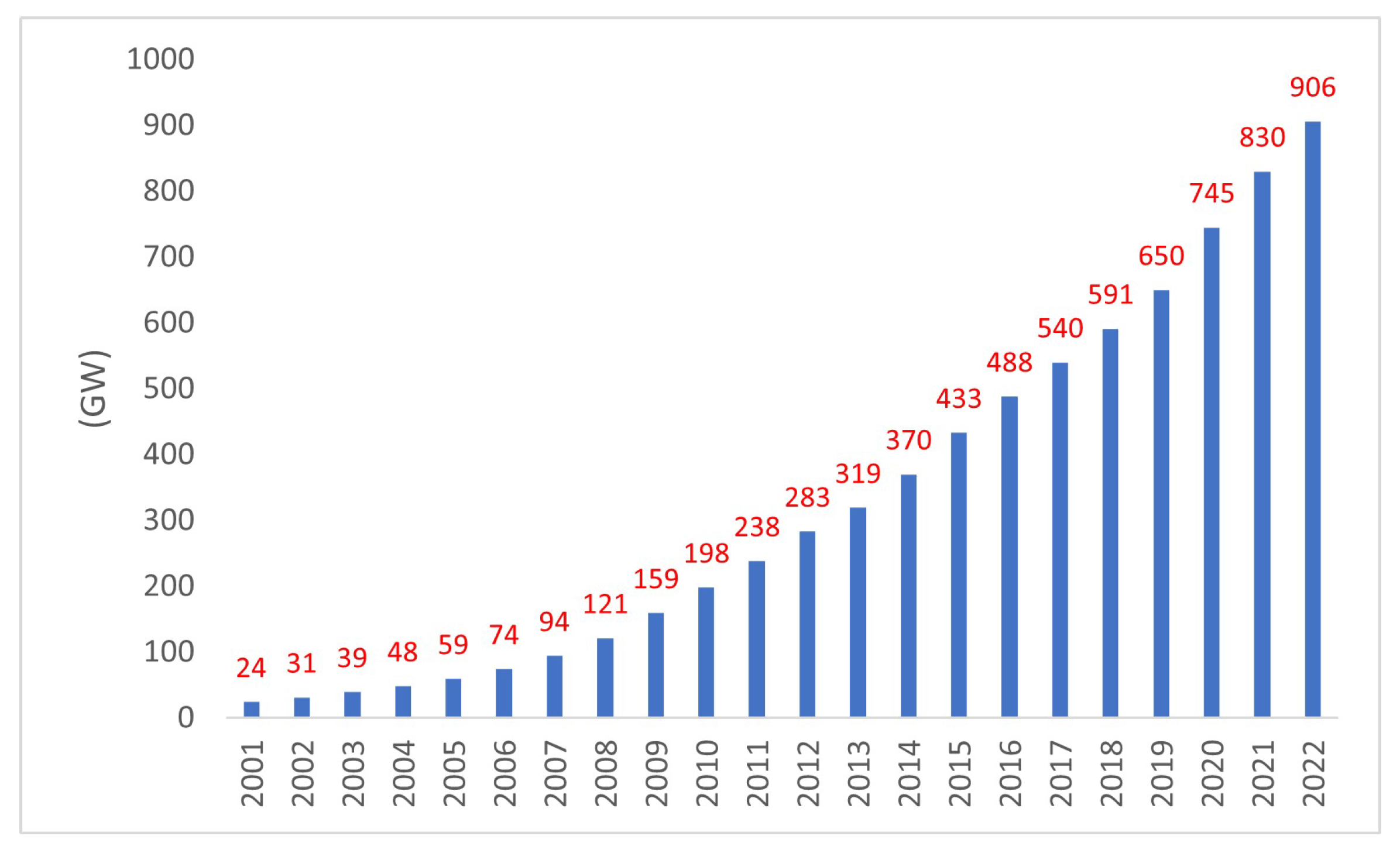


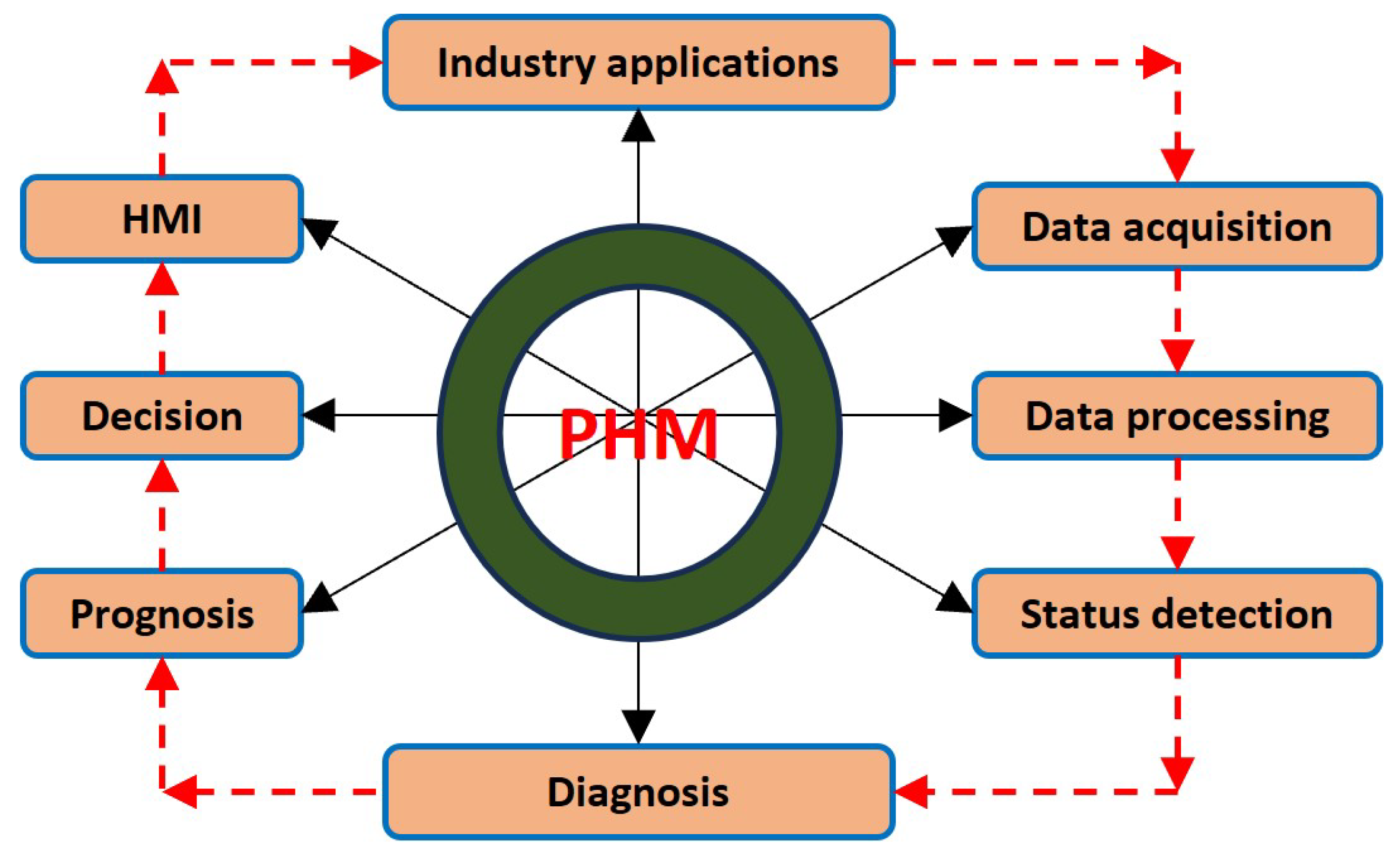


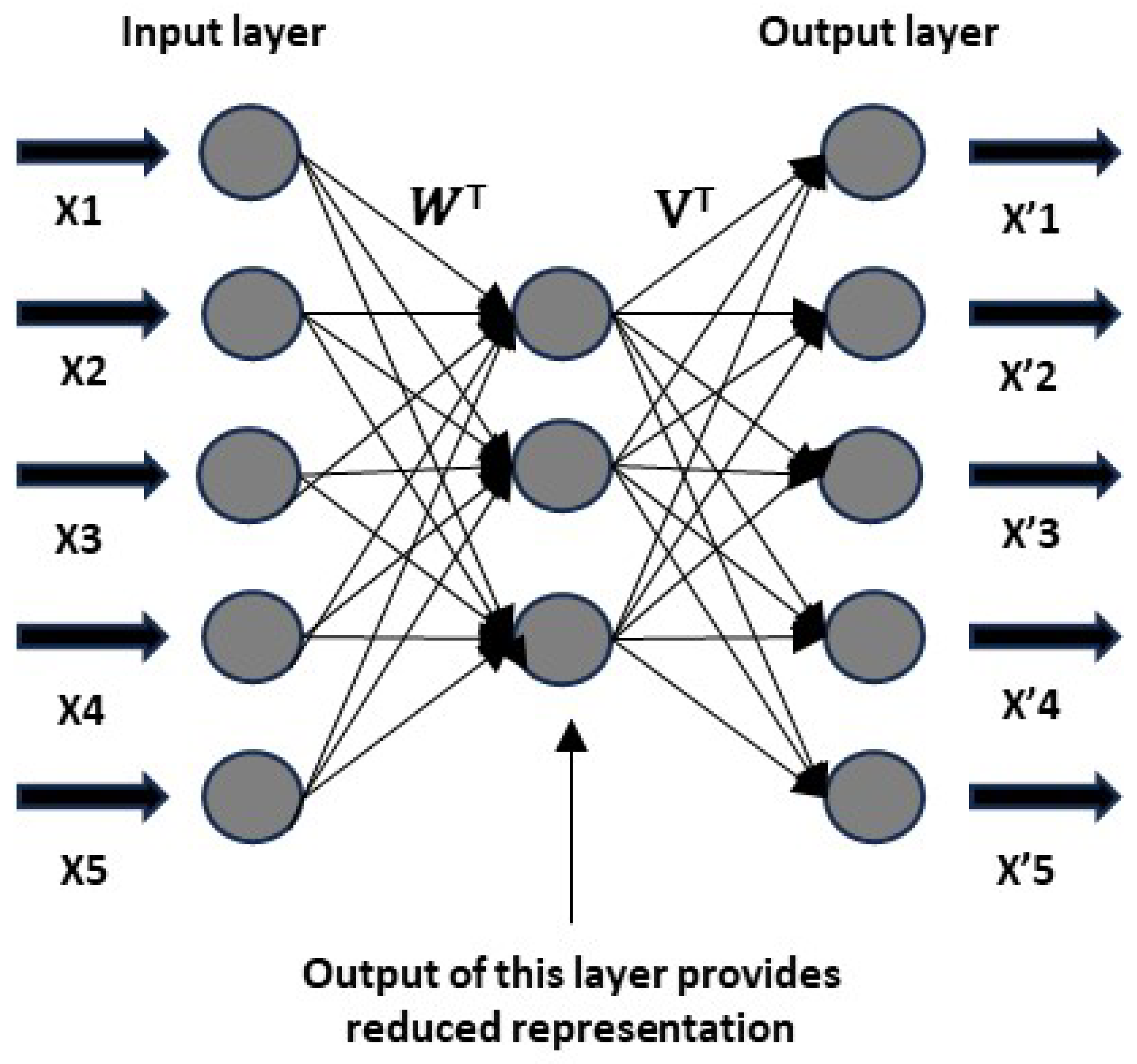
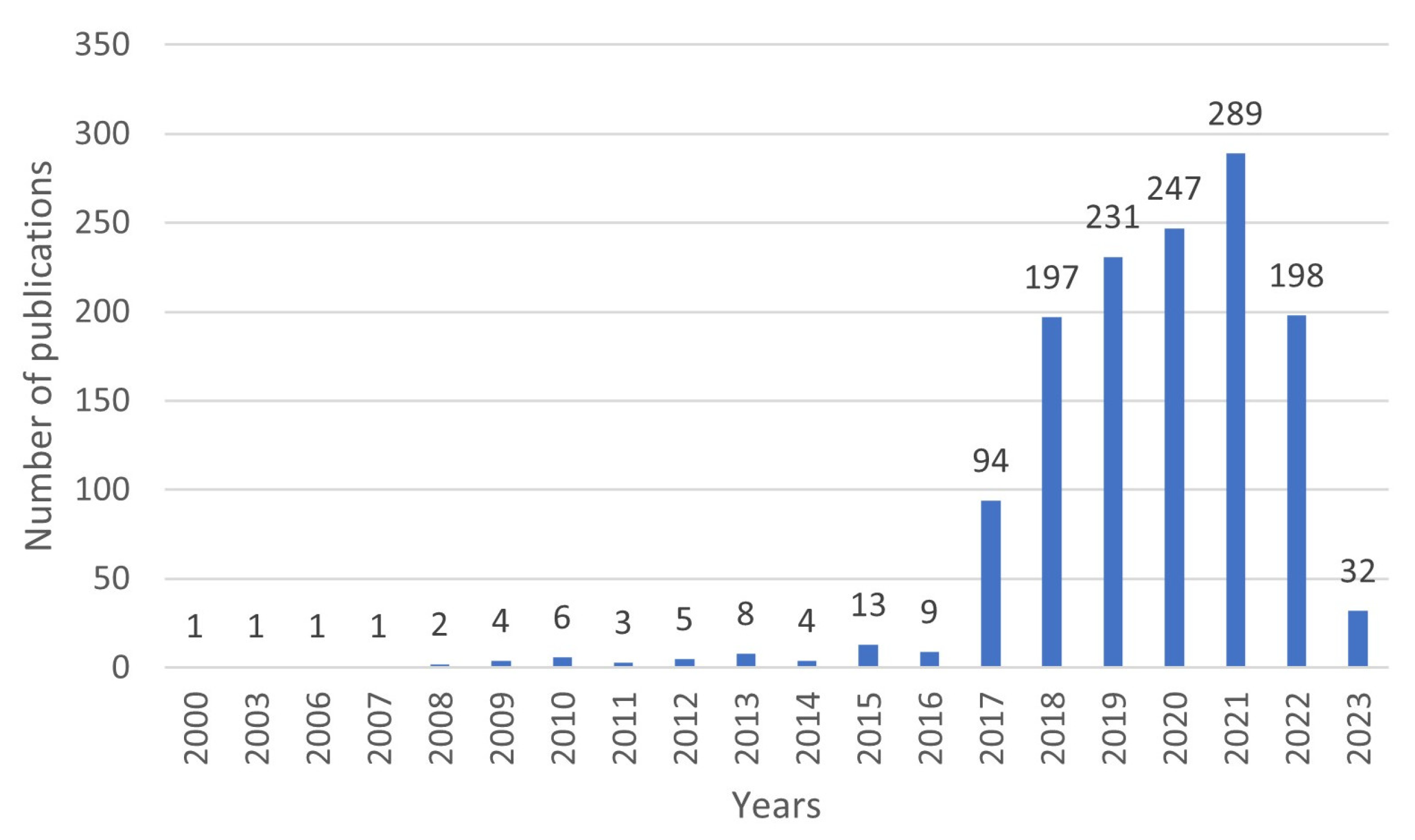


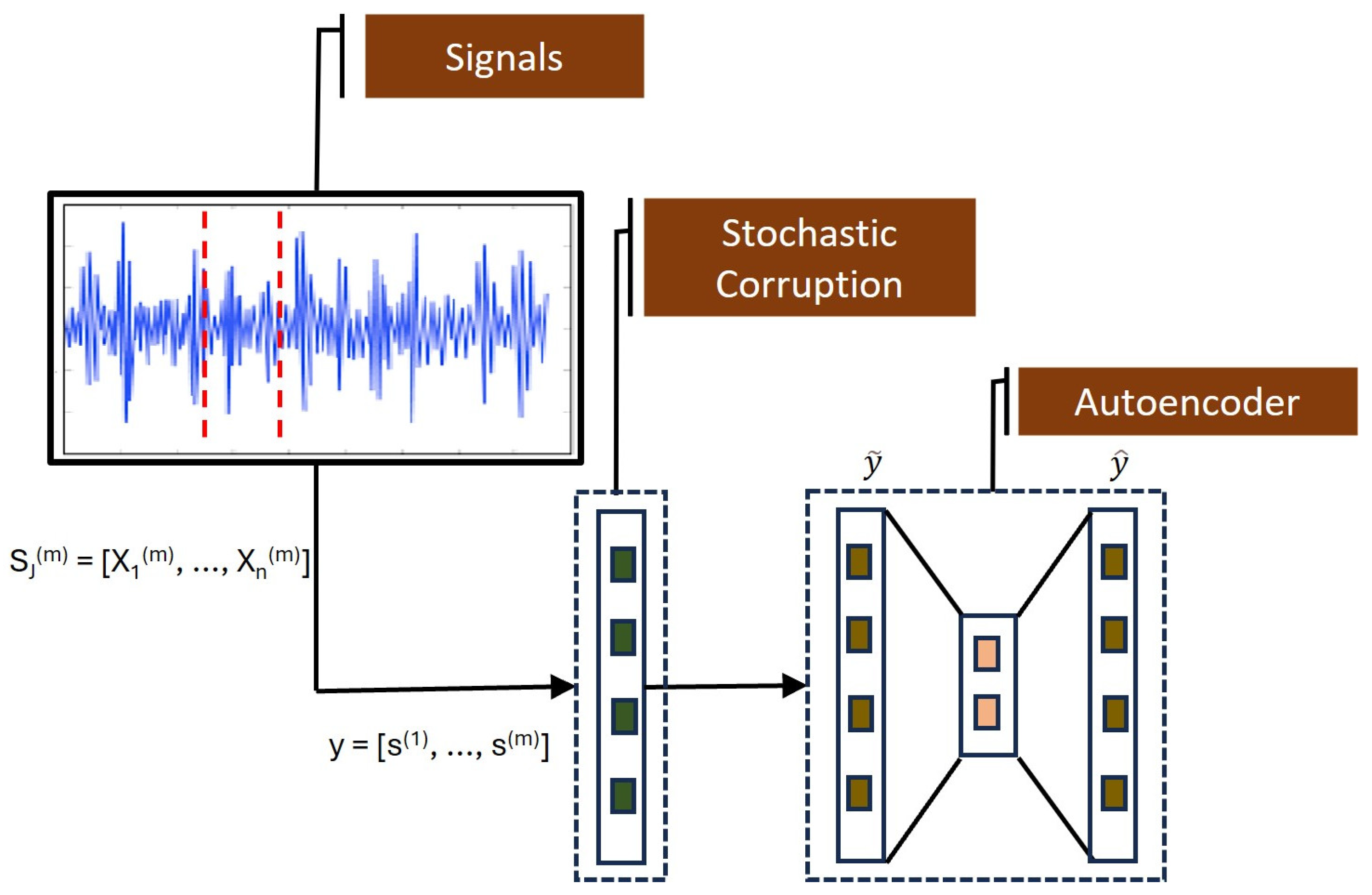

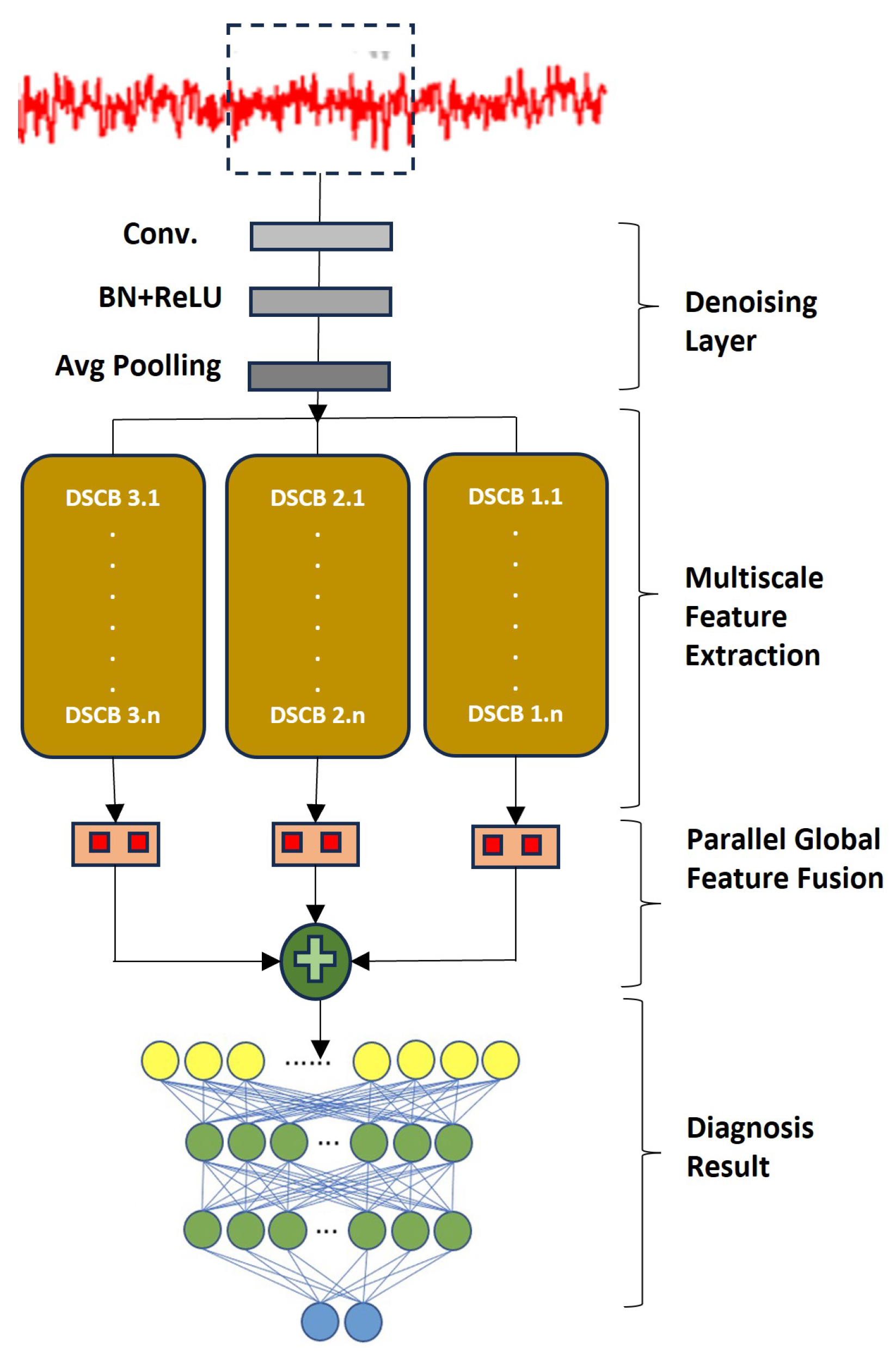
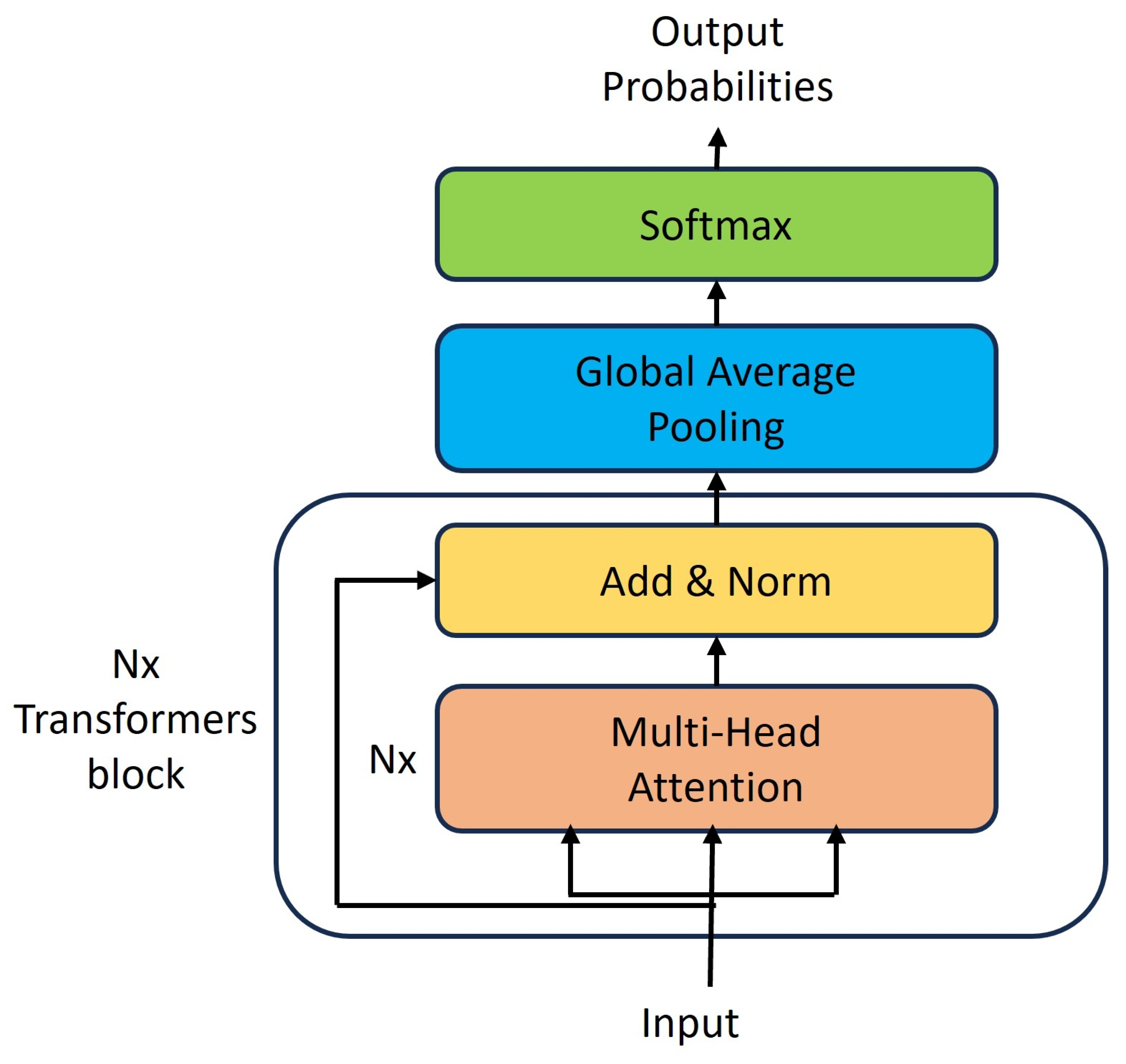
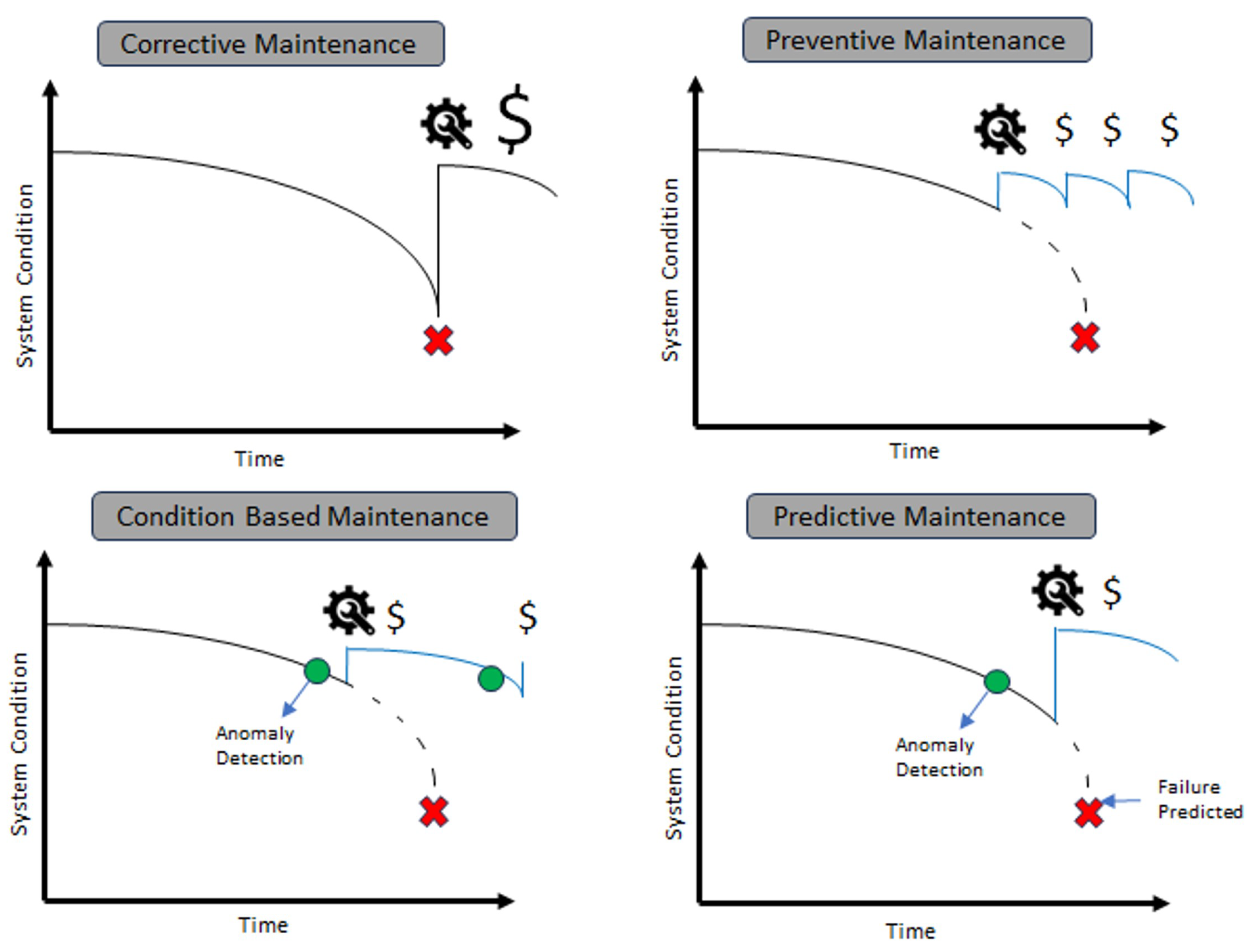
| Types of Generators | Technical Characteristics |
|---|---|
| Squirrel-Cage Induction Generator (SCIG) | An electronic converter controls the rotor; The machine has a greater number of poles; The gearbox can be removed; To create the magnetic field of the synchronous generator rotor, it is necessary to include another converter connected to the slip rings. |
| Doubly Fed Induction Generator (DFIG) | It features a multiplier box; It is connected directly to the mains; The rotor is connected through a directional electronic converter; The converter acts as an excitation source; It allows disturbances in the network; The machine is required to have slip rings on the rotor. |
| Wound Rotor Synchronous Generator (WRSG) | The multiplier box can be removed; The electronic converter has a larger number of poles; To create the magnetic field of the synchronous generator rotor, it is necessary to include another converter connected to the slip rings. |
| Permanent Magnet Synchronous Generator (PMSG) | There is no need for a multiplier box; There are no rotor windings; The need for maintenance is reduced; It eliminates the need for an excitation circuit; It has complete control of active and reactive power, acting in a wide range of wind speeds. |
| Objectives | Keywords | Documents |
|---|---|---|
| Identify the most recent approaches and frameworks for applying fault detection and diagnostic models | (“PHM” OR “Prognostic and Health Management” OR “Condition Based Maintenance” OR “Predictive Maintenance”) AND (“Diagnosis” OR “Diagnostic” OR “Fault Classification” OR “Fault Detection”) | 886 |
| Identify applications of PHM models in similar contexts of direct-drive wind turbines | (“Permanent magnet” OR “PMSG” OR Direct-drive) AND (“WIND TURBINE” OR “EOLIC” OR “ENERGY”) AND (“Prognostic and Health Management “ OR “Condition Based Maintenance” OR “Predictive Maintenance” OR “Machinery Fault Diagnosis” OR “Machinery Prognosis” OR “PHM”) | 27 |
| Identify the latest prognostic modeling approaches | (“PHM” OR “Prognostic and Health Management” OR “Condition Based Maintenance” OR “Predictive Maintenance”) AND (“Prognosis” OR “Prognostic” OR “Remaining Useful Life”) | 327 |
| Research approaches related to the implementation of prescriptive maintenance of wind turbines | (“Prescriptive Maintenance” AND “Wind turbine” OR “EOLIC OR ENERGY) AND (“Prognostic and Health Management “ OR “Condition Based Maintenance” OR “Deep Learning” OR “Machinery Fault Diagnosis”) | 16 |
Disclaimer/Publisher’s Note: The statements, opinions and data contained in all publications are solely those of the individual author(s) and contributor(s) and not of MDPI and/or the editor(s). MDPI and/or the editor(s) disclaim responsibility for any injury to people or property resulting from any ideas, methods, instructions or products referred to in the content. |
© 2024 by the authors. Licensee MDPI, Basel, Switzerland. This article is an open access article distributed under the terms and conditions of the Creative Commons Attribution (CC BY) license (https://creativecommons.org/licenses/by/4.0/).
Share and Cite
Santiago, R.A.d.F.; Barbosa, N.B.; Mergulhão, H.G.; Carvalho, T.F.d.; Santos, A.A.B.; Medrado, R.C.; Filho, J.B.d.M.; Pinheiro, O.R.; Nascimento, E.G.S. Data-Driven Models Applied to Predictive and Prescriptive Maintenance of Wind Turbine: A Systematic Review of Approaches Based on Failure Detection, Diagnosis, and Prognosis. Energies 2024, 17, 1010. https://doi.org/10.3390/en17051010
Santiago RAdF, Barbosa NB, Mergulhão HG, Carvalho TFd, Santos AAB, Medrado RC, Filho JBdM, Pinheiro OR, Nascimento EGS. Data-Driven Models Applied to Predictive and Prescriptive Maintenance of Wind Turbine: A Systematic Review of Approaches Based on Failure Detection, Diagnosis, and Prognosis. Energies. 2024; 17(5):1010. https://doi.org/10.3390/en17051010
Chicago/Turabian StyleSantiago, Rogerio Adriano da Fonseca, Natasha Benjamim Barbosa, Henrique Gomes Mergulhão, Tassio Farias de Carvalho, Alex Alisson Bandeira Santos, Ricardo Cerqueira Medrado, Jose Bione de Melo Filho, Oberdan Rocha Pinheiro, and Erick Giovani Sperandio Nascimento. 2024. "Data-Driven Models Applied to Predictive and Prescriptive Maintenance of Wind Turbine: A Systematic Review of Approaches Based on Failure Detection, Diagnosis, and Prognosis" Energies 17, no. 5: 1010. https://doi.org/10.3390/en17051010
APA StyleSantiago, R. A. d. F., Barbosa, N. B., Mergulhão, H. G., Carvalho, T. F. d., Santos, A. A. B., Medrado, R. C., Filho, J. B. d. M., Pinheiro, O. R., & Nascimento, E. G. S. (2024). Data-Driven Models Applied to Predictive and Prescriptive Maintenance of Wind Turbine: A Systematic Review of Approaches Based on Failure Detection, Diagnosis, and Prognosis. Energies, 17(5), 1010. https://doi.org/10.3390/en17051010







